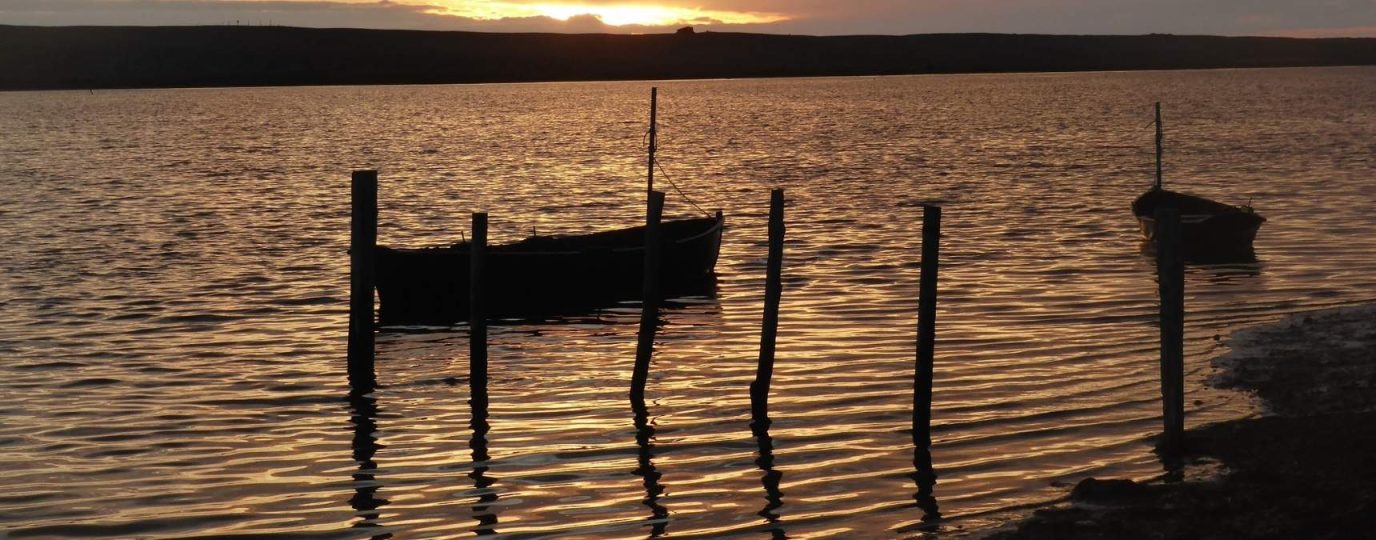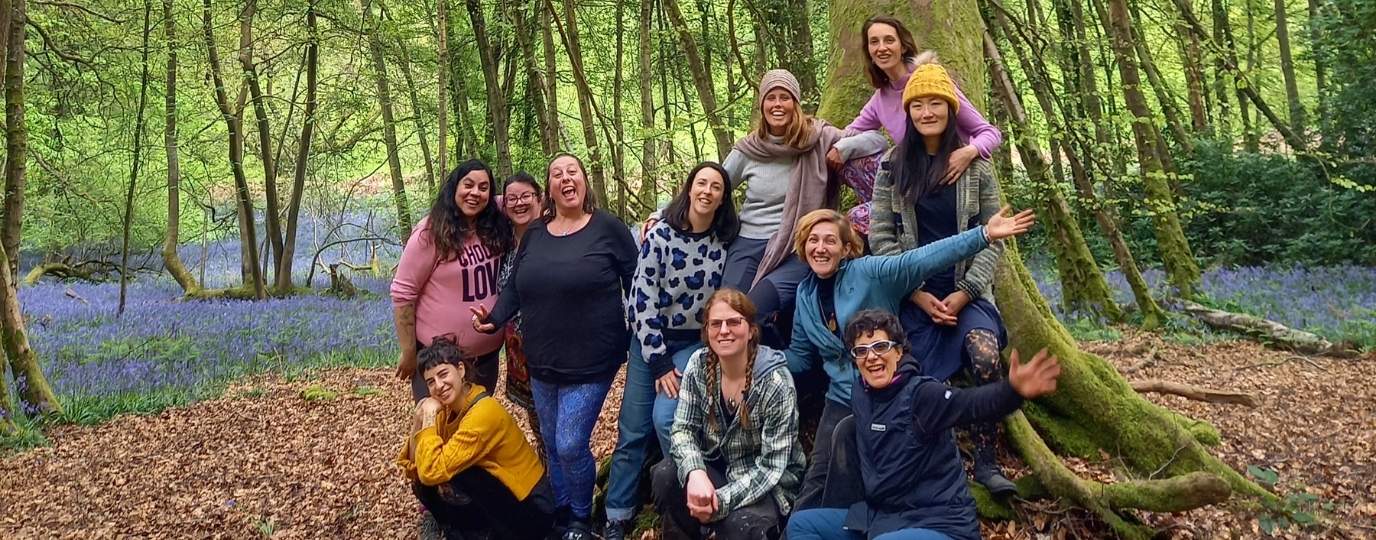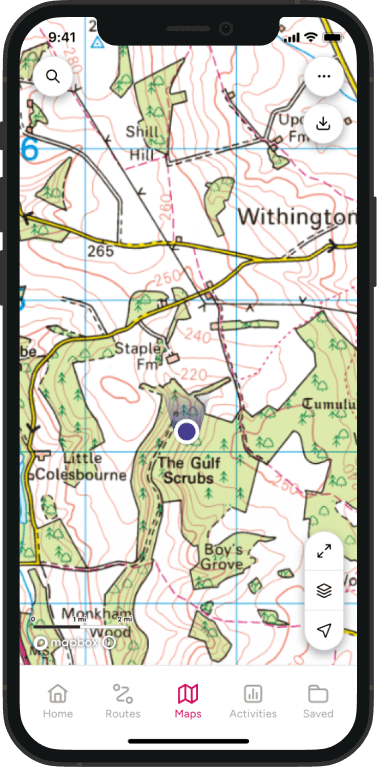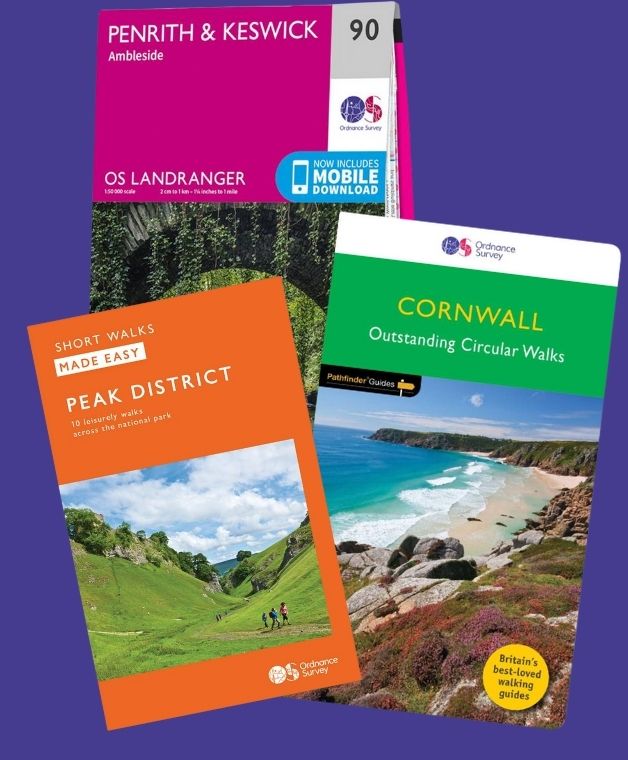
We’re thrilled to welcome historian and bestselling author Alice Loxton to the Get Outside blog. Alice’s latest book, Eleanor: A 200-Mile Walk in Search of England’s Lost Queen, is a captivating blend of historical investigation and modern-day pilgrimage. Retracing the funeral route of Queen Eleanor of Castile, Alice uncovers the stories behind the iconic Eleanor Crosses and the enduring legacy of a medieval queen often forgotten by history.
In this post, Alice offers a behind-the-scenes glimpse into one leg of her journey along Queen Eleanor’s funeral route, walking between two of the historic Eleanor Crosses. You’ll find a link to the OS Route she followed at the end of the post, so you can explore it for yourself.
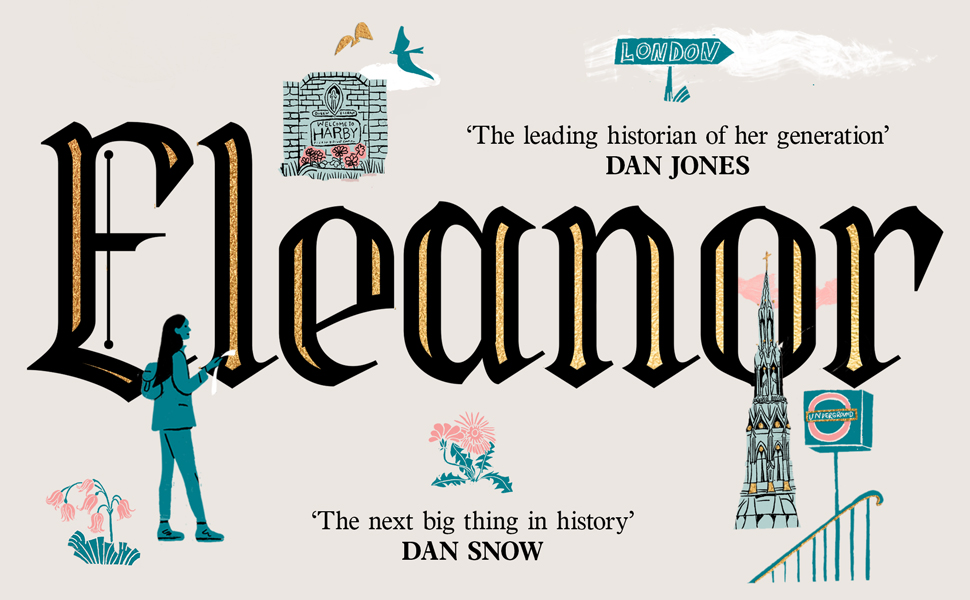
Two Eleanor Crosses – Geddington to Stamford
At 6am on Friday 6 December 2024, I stepped out from The Crown Hotel. At this early hour the people of Stamford were asleep, their curtains drawn. The silent streets were only disturbed by the soft tread of my footsteps and an unearthly gust of gentle wind.
Before the original medieval Eleanor Cross was destroyed during the tumult of the Civil War, it stood for 350 years. Captain Richard Symonds of the Royalist army, who travelled through the town on 23 August 1645, recorded it in his diary: ‘On the hill before you come into the towne stands a lofty large crosse’ – though his understanding of history was confused – ‘built by Edward III, in memory of Elianor his queene, whose corps were here, coming from the north.’
Today, a new – rather more modern – Eleanor Cross stands, erected in Sheepmarket, a small triangular clearing. Designed by the fabulously named artist Wolfgang Buttress, this enormous needle is made of local Ketton stone, carved with a repeating spiral pattern of roses and tapers into an extremely pointy bronze spike. A no-go zone for hot-air balloons.
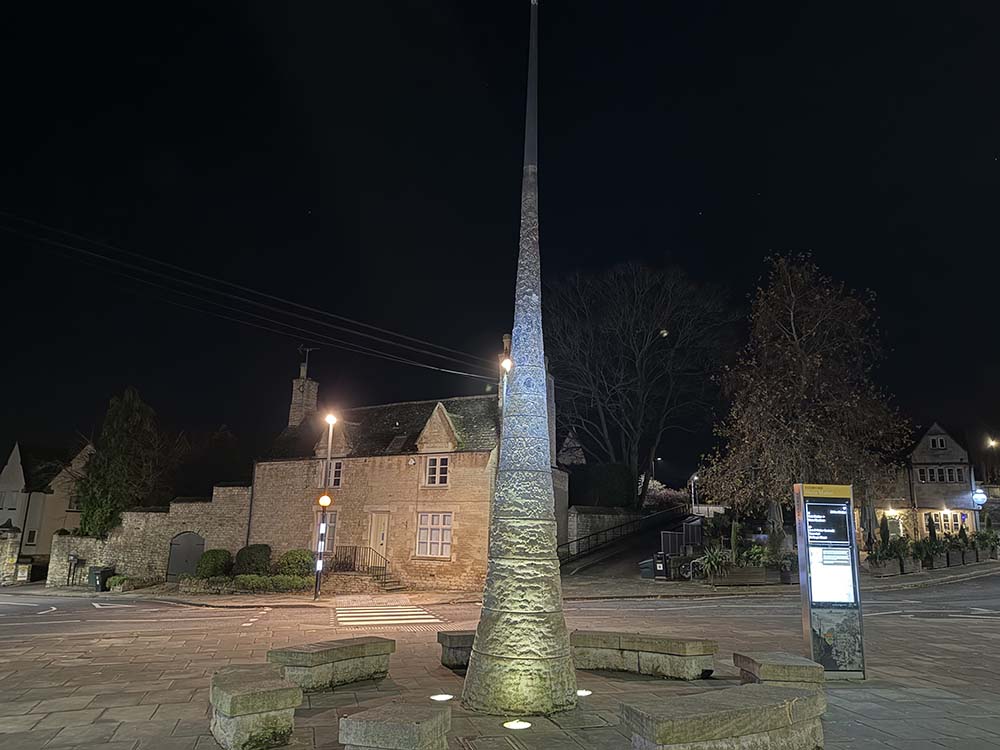
It was on that eerie morning that I visited this monument. I put my hand to the cold, rough surface and looked up at the beautiful carpet of roses, the flowers Eleanor so loved. What would Edward think to know that, more than 700 years after Eleanor’s death, new monuments were being built in her memory? In that moment, connected to this waypoint of love – and reminded of all the people who remembered Eleanor over the centuries – I didn’t feel quite so alone.
With the OS Maps app open, I set off once more. Following the little red arrow, I headed down a steep hill, skirting stone walls, passing a small jumble of houses, and minutes later I was into the wild town meadows. This is a magical land. Here, in springtime, the sweet-scented white flowers of elder fill the hedgerows, transforming to blue-black berries in the autumn. Here, metallic green damselflies dart, with their fluttering pale green wings. The eagle-eyed among us might spot the five-toed footprints of otters or a flash of colour as a kingfisher dives for a fish.
But in the ghostly December dark, such delights were only imaginings. Guided by the yellow spotlight of my headtorch and gripping the fencing tight, I followed the route of the millstream – a flow of water that was mentioned in the Domesday Book of 1086. This was perilous. The paths were slippery; one wrong foot would see me flying into the black water below, with no one around to hear the splash. I would be found in the morning as a Banksy-style Ophelia: hair tangled among the reeds, fingers trapped in ice, headtorch flickering sadly.
Then came the forbidding underpass of the A1. After scanning it with my headtorch, I stepped into the dank darkness. A walk soon quickened to a scamper, then a half-run, which continued until I was a good deal clear. Next, I came to a railway track and a big sign that insisted I ‘Stop Look Listen’. After diligently stopping, looking left and right and standing still to listen, I carefully walked across. I then continued along the route of the Jurassic Way, a long-distance footpath that follows an ancient ridgeway.
I passed All Saints’ Church at Easton on the Hill, then Collyweston. At 7.30 a.m., the sun’s long rays stretched across the misty skies, and I turned the torch off. Day was with me once more. How pretty the cream-coloured cottages looked, with their Collyweston slate roofs, in the soft morning light. There were endless curiosities: a fifteenth-century priest house, leafless trees with tiny apples clinging on, a wide valley that was once the site of an Augustinian priory. I was reminded once again that the remnants of our ancestors’ lives are all around – if you only take time to look.
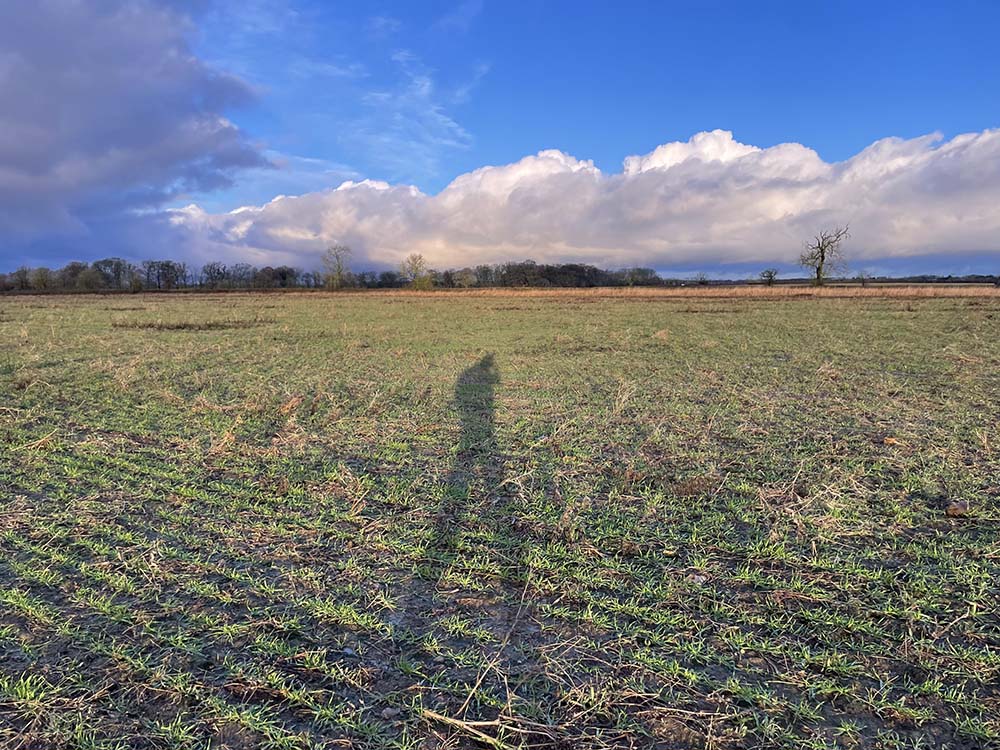
Friday 6 December was the most beautiful of all the days I walked. The sky was blue and clear, the air cold and crisp. An extra blessing came in the form of a friend, Laura, who joined me on the saunter. An ex-army officer, Laura’s tactical training from army days soon came into play. A couple of miles in, we were confronted by an alarming adversary: a large herd of cows, bearing enormous, pointed horns. These were the English Longhorn and they were unnervingly interested in us as we peered back at them across the gate. Laura and I considered the magnificent beasts that stood in our way. Should we cross the field or take another route? Was this herd a serious threat or did we have lily-livered resolve? With military logic, Laura began weighing up the potential outcome of contact with one of those pointed horns – would it merely pierce your body or spear you all the way through?
This mind-mapping immediately clarified my thinking. Calculating that I was probably the weaker of the two, I preferred not to put Darwin’s theories of natural selection to the test. A diversion was required. We bade good day to the Longhorns and walked away along the lane, re-joining another cow-free field half a mile later.
At 10 a.m., we crossed a beautiful stone bridge – Blatherwycke Bridge. On that fine December day, the world felt an oasis of calm. Any aches and pains seemed less of a burden, being uplifted by the natural beauty that stretched out before us. The water shimmered in the low sun. Hundreds of geese flew up from the reeds, their flapping wings echoing far across the valley.
The bridge was built of limestone and has two cutwaters – triangular sections that protrude towards the stream, gently directing the water between the piers and giving pedestrians a refuge from oncoming traffic. As we stood in one of these cutwaters, gazing down into the trickling waters below, Laura whipped out a small rectangular package. I knew exactly what it was the instant I saw the flash of bright purple. ‘Fruit and Nut?’ she asked, breaking a chunk from the Dairy Milk bar.
Not long after the chocolate stop, there were more confectionery delights. We came upon Bulwick Village Shop, an emporium of cakes, chutneys, sweets and – it seemed – pretty much anything you wanted. Paralysed by choice, we had the lot. Hot chocolate with cream. A bacon roll each. A mince pie to share. A bag of fudge for the road.

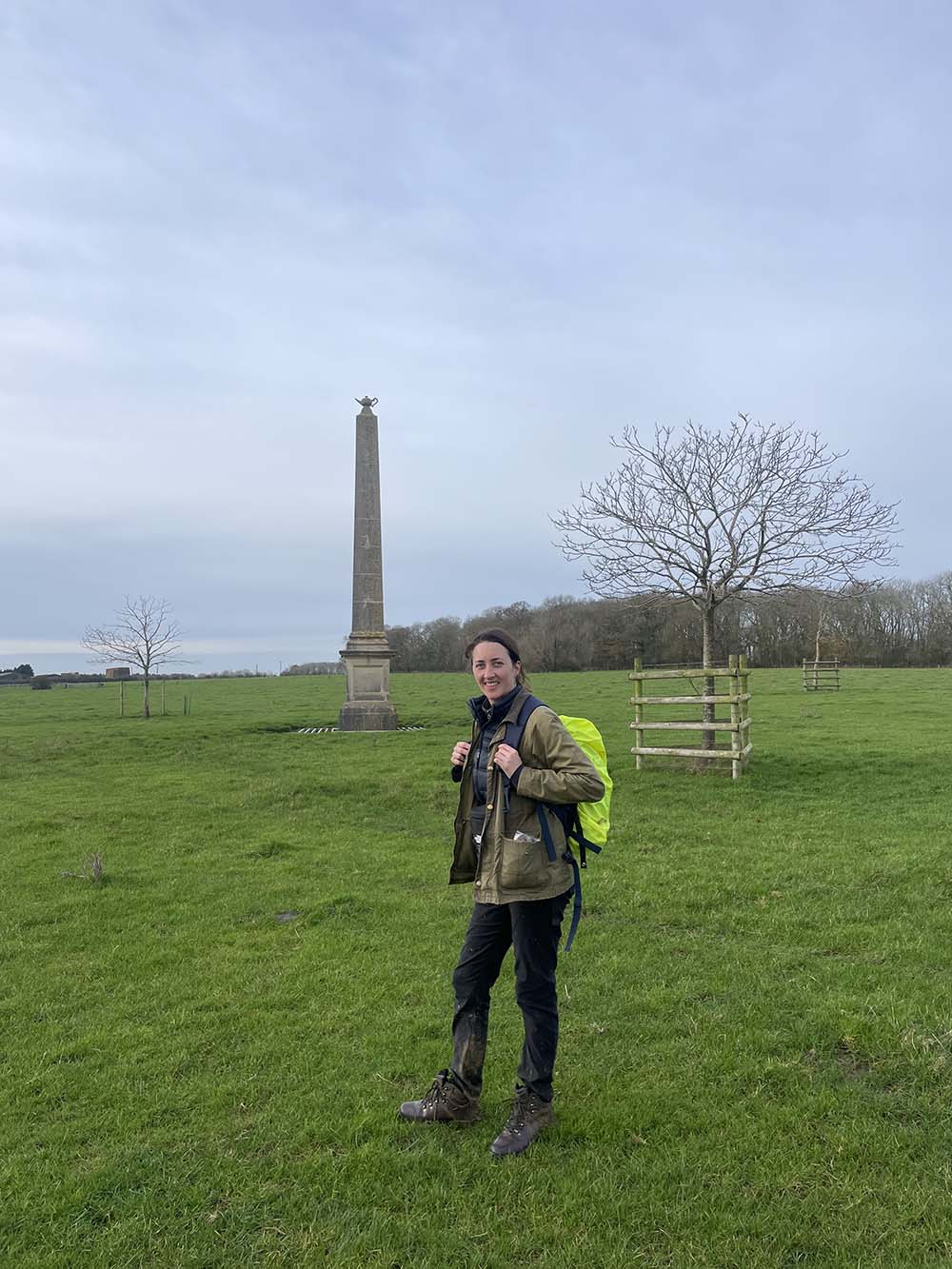
The day was filled with more curiosities. A Round House, once used to detain drunkards overnight. An obelisk surmounted by a teapot. For several miles we traced the outskirts of Corby. Finally, we descended through a large woodland area, which had a clearing to form a fine vista, complete with tall church spire. Suddenly, realising what lay ahead, I felt a pang of fluttering excitement. After days of disappointment – staring into tarmac or squinting at a plaque through Heras fencing – I was finally on the approach to the real deal. With every step, I got closer to Eleanor. It was like she had been waiting for us for 700 years, and now – finally – the moment of reconciliation was imminent.
We were soon swallowed up between neat garden hedges and, before I knew it, the earthen path became concrete. There was an early clue in the housing estate: a signpost reading ‘Queen Eleanor’s Road’. Rounding a corner, we came upon an idyllic village scene.
Sweet rows of cottages, a village pub and a medieval bridge crossing the stream. And there it was: right in the heart of it all, soaring high into the sky, like a rocket about to shoot into space. An original Eleanor Cross, in all its glory. And perched halfway up, in a gabled niche, was a statue looking out towards me: I came face to face with Eleanor herself.
We were in the heart of Geddington village. It was mid-afternoon and flooded with young children skipping home after a day at the village school. Cries of ‘See you tomorrow’ were thrown across the square. These youngsters were full of beans: jumping, hopping and running across the steps. The Eleanor Cross was their playground. One boy stood at the highest step, hand in the air: ‘I’m the statue of New York!’ he proclaimed.
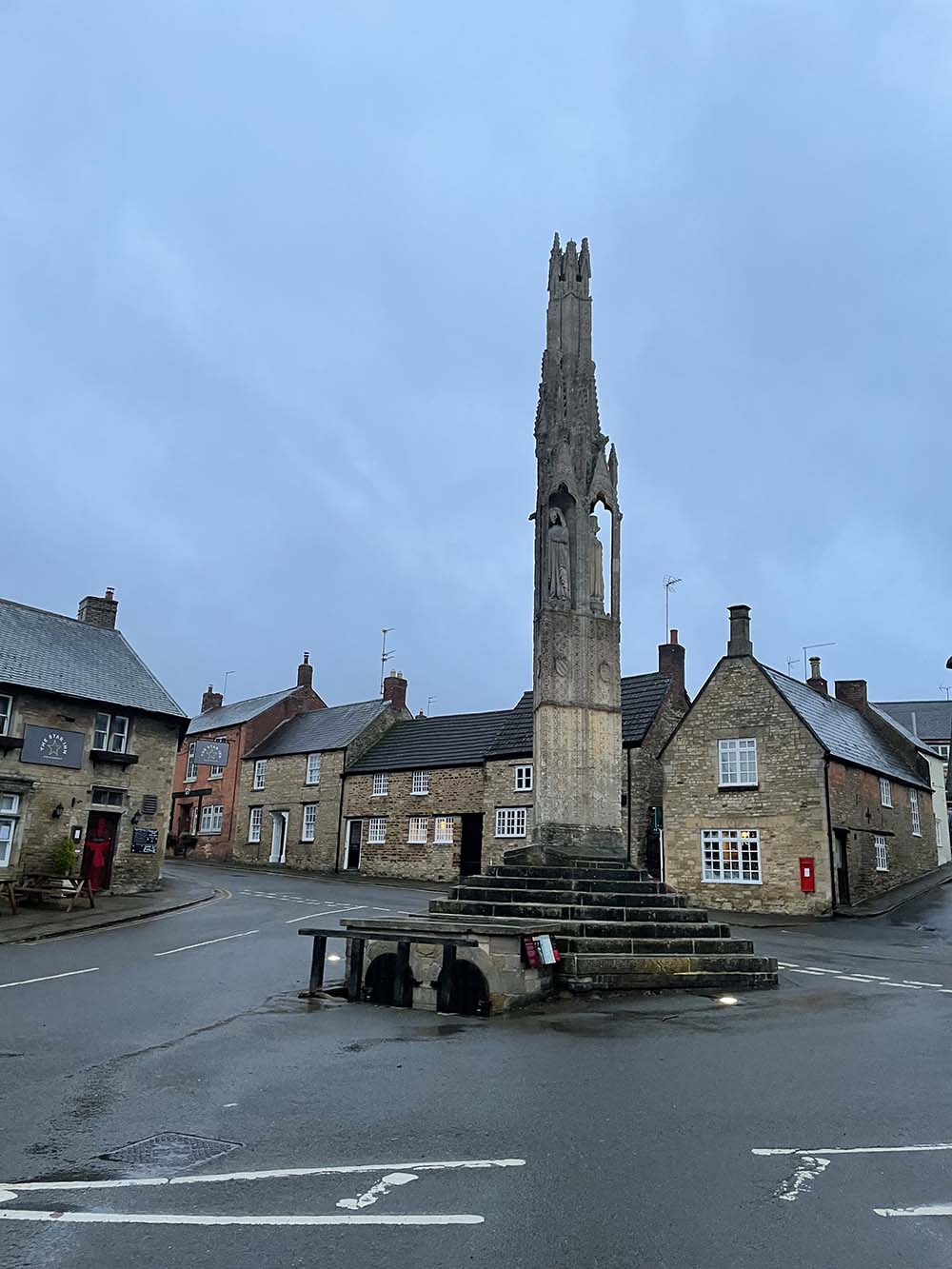
The Eleanor Cross is a beautiful monument. It comprises of a triangular shaft, decorated with an intricate leaf-like pattern – perhaps a nod to Eleanor’s love of gardens. This soaring tower is adorned with six shields – a pair on each of the three faces – which were originally coloured. Here, for centuries, the people of Geddington glanced up to see blue and gold diagonal stripes of Ponthieu, black lions of León, gold castles of Castile and red lions of England.
Above this are three sculptures of Eleanor, standing in gabled canopies. It is striking that each of the statues sits within a triangular niche, placing them behind a slender column. It means that Eleanor is partially disguised, forcing us to walk slowly around the monument to glimpse her face, her veil and coronet, the folds of her dress, which spill over her shoes. It is like a kaleidoscope – everywhere, Eleanor is watching from this triangular shape. Yet you only ever get a fleeting glimpse before she is obscured once more.
To top it all off are several metres of pinnacles and canopies, crushed together and soaring high. In total, it is 13.2 metres (43 feet) of beautiful stonework. The only part missing is the cross that once surmounted it, which has probably fallen off. This was probably about 3 metres in height, making the whole monument about 16 metres (52 feet) high.
At the bottom is a set of seven steps that rise more than a metre up from the road surface. Not only does this give the cross great height, but it also provides an excellent spot to sit and watch the world go by. For Laura and I – now weary travellers – this was very welcome. After 20 miles walking in the December sunshine, we untied our laces and put down our backpacks. Another day – a wonderful day – of the Eleanor pilgrimage was complete.



